No garden is complete without an array of flowers. Problem is, with up to 400,000 different species of flowers in the world, there’s almost too many to choose from. You can start with flowers that start with W.
This also makes it hard for florists and horticulturists to learn about each and every species. Sometimes, it’s far easier to separate the species into categories to get a better understanding of them all.
If you’re looking to expand your flower knowledge or to enhance your backyard garden, you’ve come to the right place. Here are 31 flowers that start with W!
1. Wild Rose (Rosa Acicularis)
Also known as the prickly wild rose or Arctic rose, the wild rose is widely distributed across the Northern Hemisphere. These deciduous shrubs produce stunning pink flowers and the characteristic thorny stems.

2. Watsonia
Watsonia is a genus of flowering plants native to southern African countries. These impressive plants feature sword-shaped leaves and dramatic red or orange tubular flowers that add a tropical flare to a garden.

3. Wallflower (Erysimum)
Wallflower is a genus of plants in the cabbage family that are most commonly planted as a spring bedding plant. Depending on the species, wallflowers are likely to produce showy yellow to orange flowers.
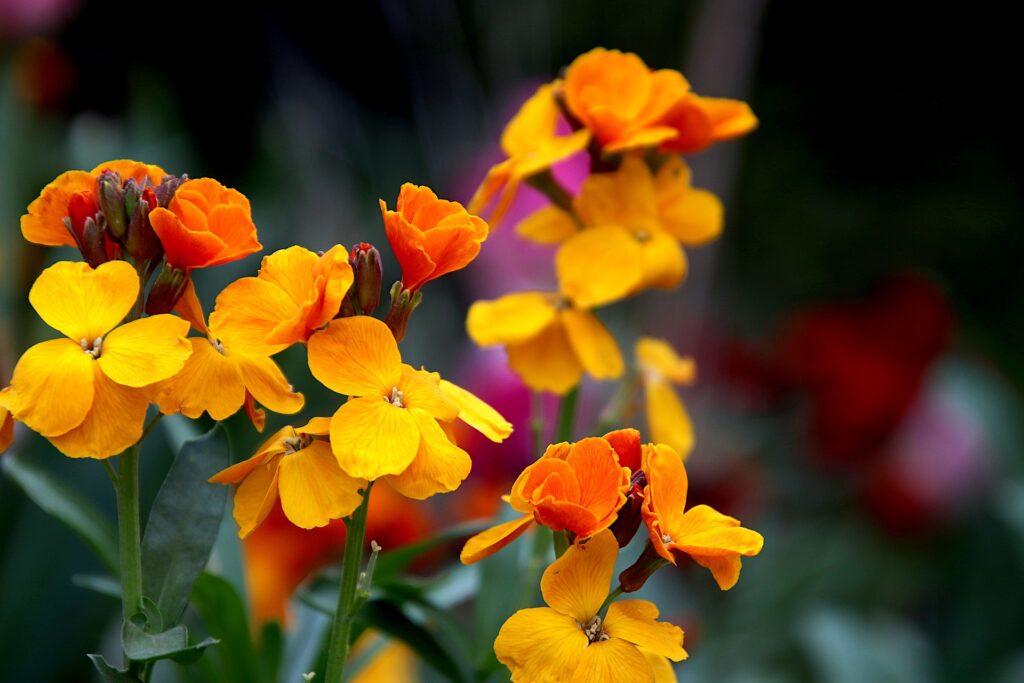
4. Wax Begonia (Begonia Cucullata)
Also known as clubbed begonia, the wax begonia is a South American species that is commonly grown as a ground cover. During summer – or throughout the year if you live in a warm region – the wax begonia will bloom flowers that vary in color, including red, pink, or white.

5. Willow-Leaved Sunflower (Helianthus Salicifolius)
Known for their showy and dramatic beauty, the willow-leaved sunflower exhibits the same flower structure as a daisy, except with vibrant yellow petals and a dark brown center. Their vivid coloring makes them appealing to pollinators, which is why these flowers are ideal for attracting wildlife to a garden!
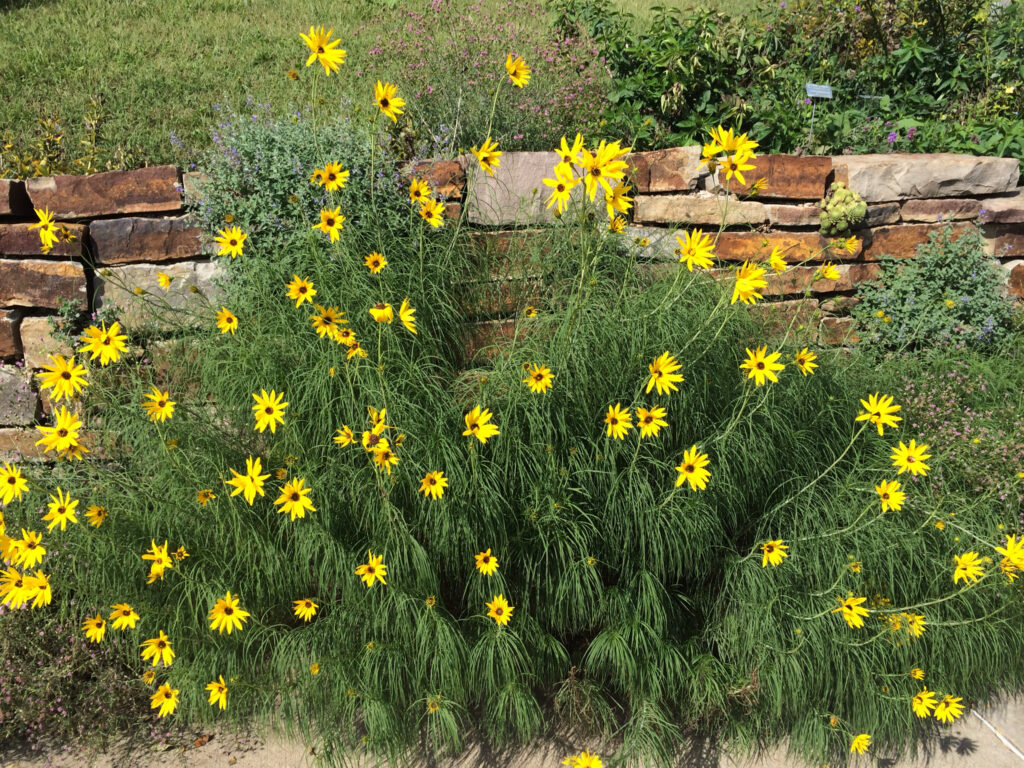
6. Water Lilies (Nymphaeaceae)
Water lilies are a family of flowering plants that are predominantly rooted in the soil of water bodies, with the flowers and leaves floating at the surface. While people typically associate water lilies with white flowers, they can also come in shades of pink, yellow, purple, and combinations.
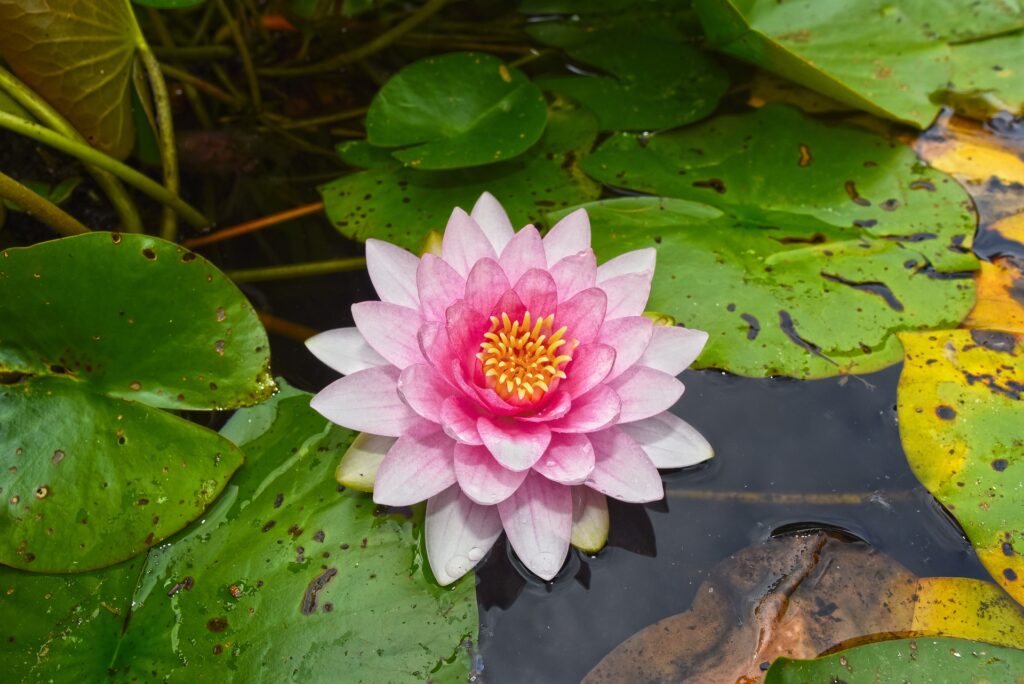
7. Wandflower (Sparaxis Tricolor)
Often known as sparaxis or the harlequin flower, the wandflower is a South African-native flower that also appears in Australia and California. These flowers are dramatically colored with their predominantly orange or brown petals and bright yellow center.
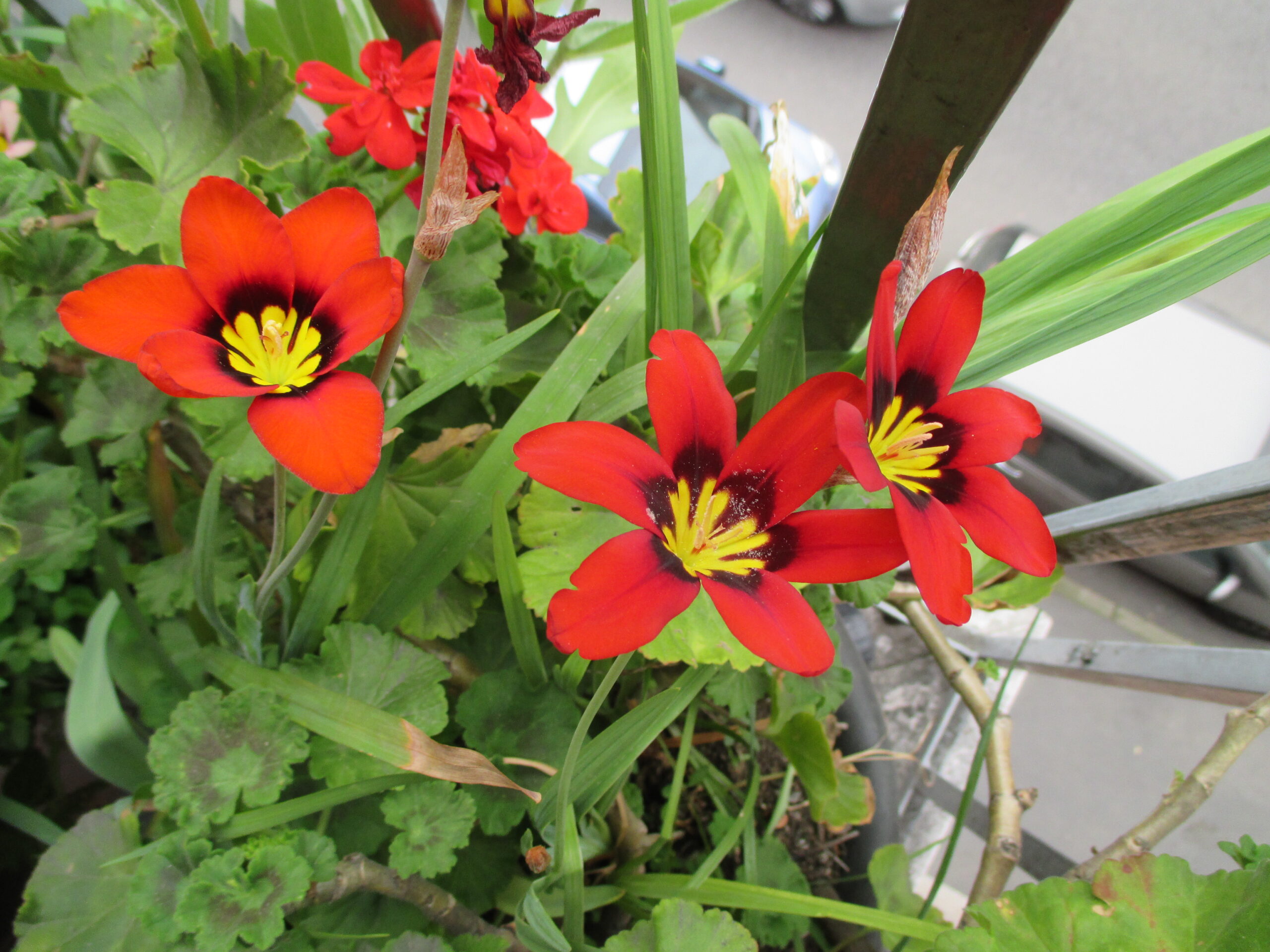
8. Wild Indigo (Baptisia Australis)
Also known as blue false indigo, the wild indigo is a perennial herb native across North America, mostly found growing at the edges of woods, meadows, and streams. Wild indigo grows up to around 1-1.5 meters and, as the name suggests, produces stunning indigo-colored flowers.
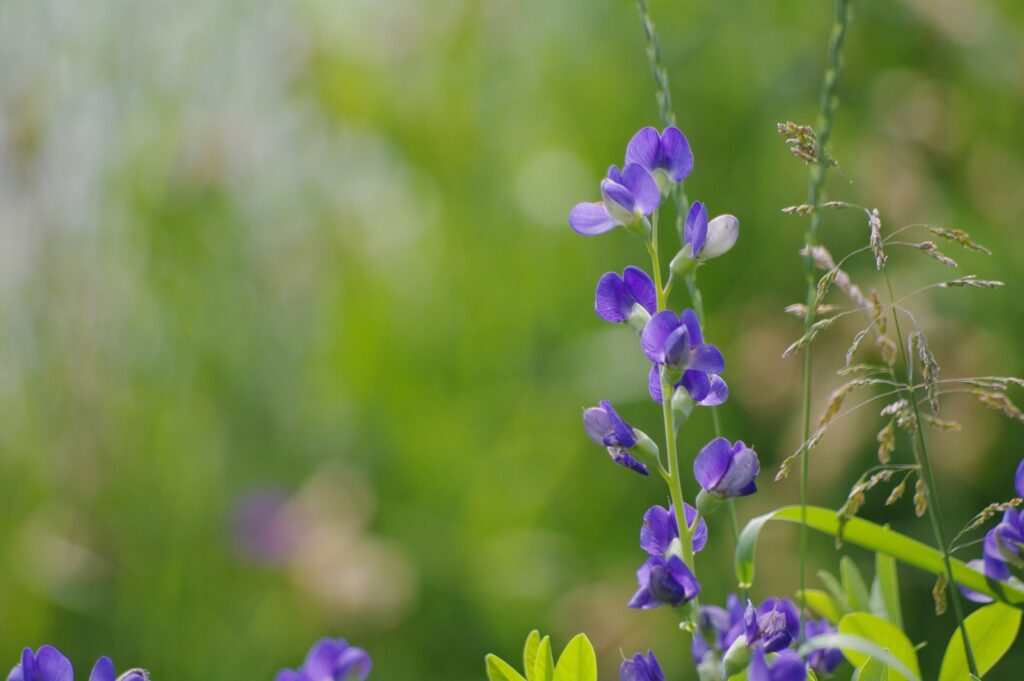
9. Windflower (Anemone)
Windflowers are a genus of flowering plants related to the buttercup family, native to all subtropical and temperate continents in the world (except for New Zealand, Australia, and Antarctica). There is no singular common color in a windflower, as the sepals can come in virtually every color.
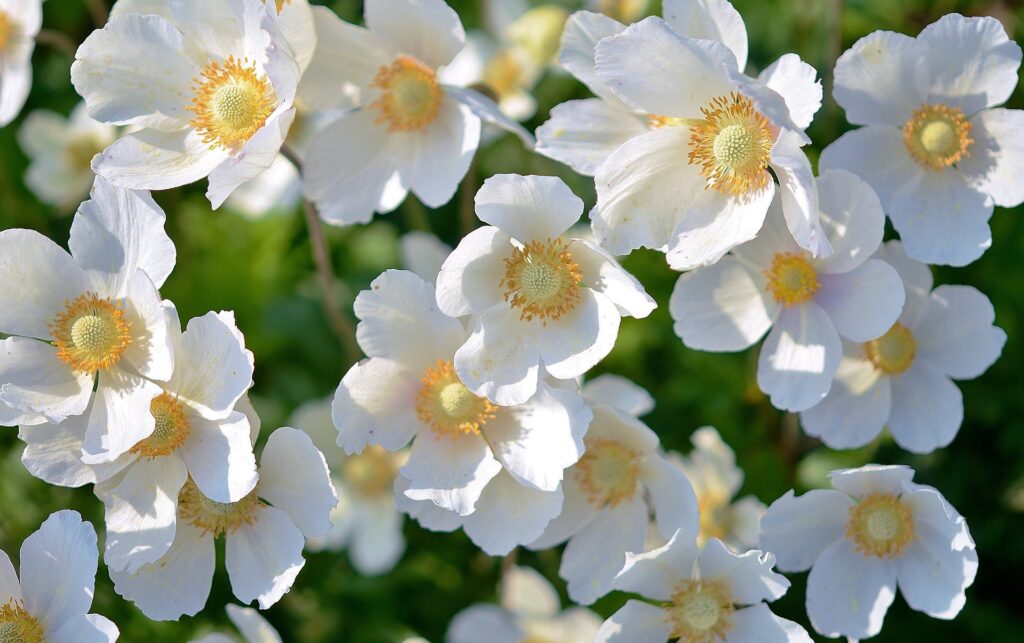
10. Wild Sweet William (Phlox Divaricata)
Wild sweet William, also known as woodland phlox, is a semi-evergreen perennial found in the forests of eastern North America. Towards the late spring and early summer, wild sweet Williams will produce pastel colored flowers, including blue-lavender, lilac, pink, or white.
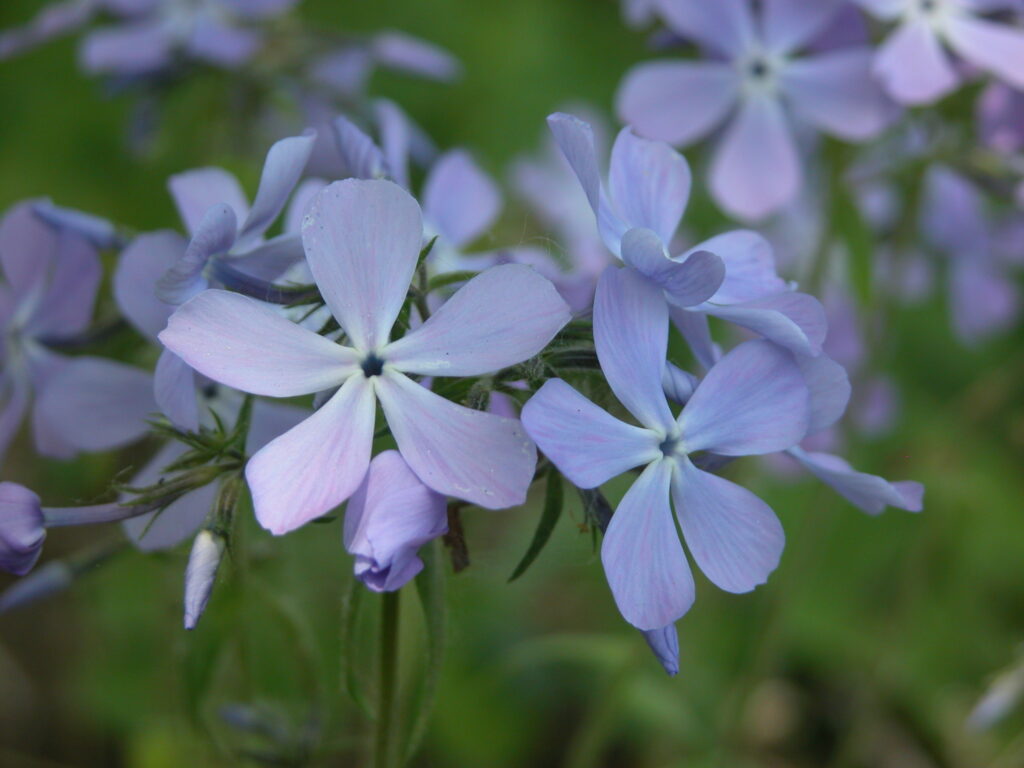
11. Wood Sage (Teucrium Scorodonia)
Also known as the woodland germander, wood sage is a flowering ornamental plant that is native to Tunisia and Western Europe. These hairy herbaceous plants produce pale green or yellow flowers that blend into the rest of the plant.
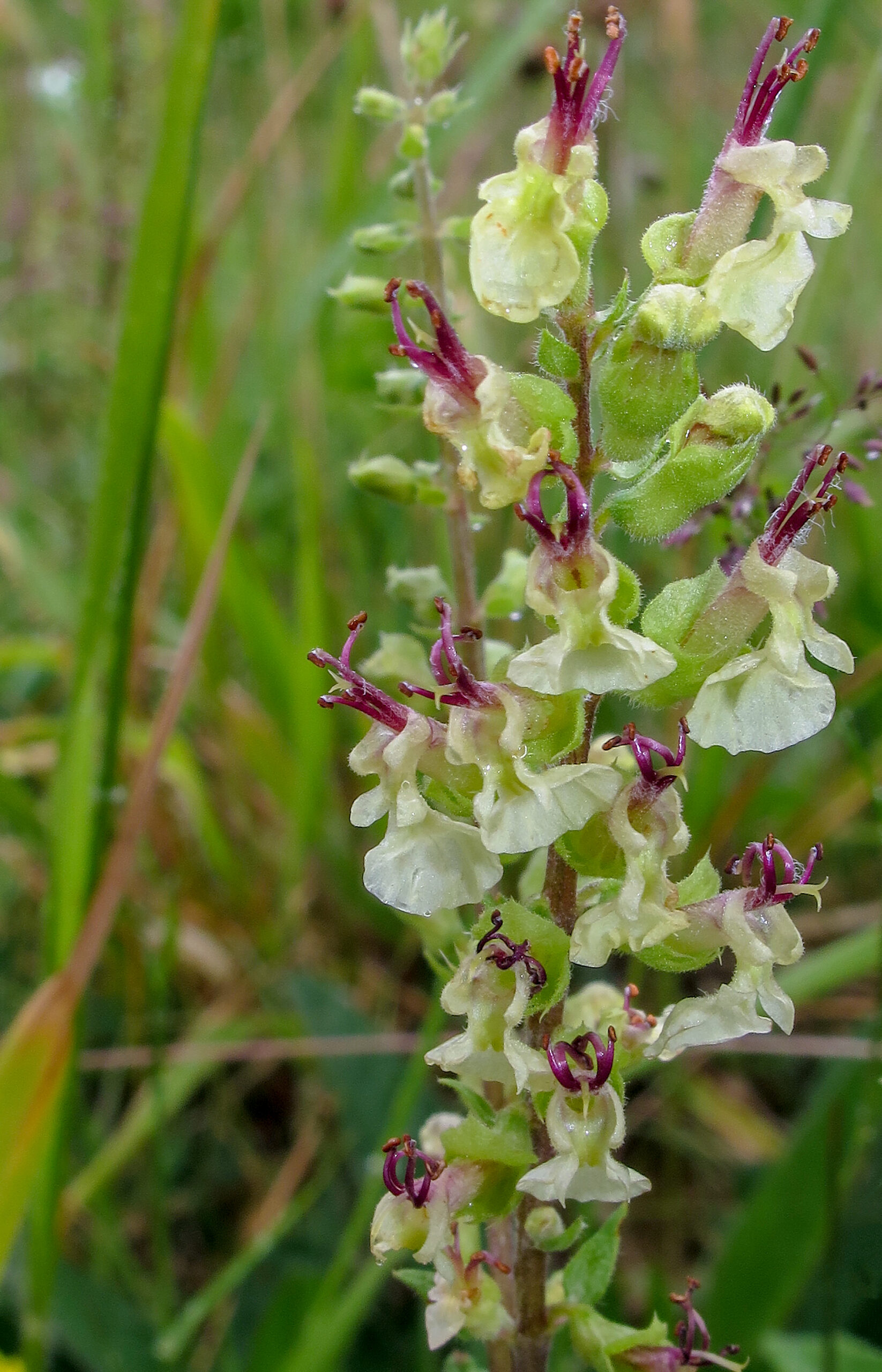
12. Witch Hazel (Hamamelis)
Witch hazel is a fascinating slow-growing plant that notoriously turns into a large-spreading shrub with a spicy aroma. The flowers produced look like spiders, with a dark red body and tangling yellow “legs”. They are most commonly grown in winter to add some color to a garden.
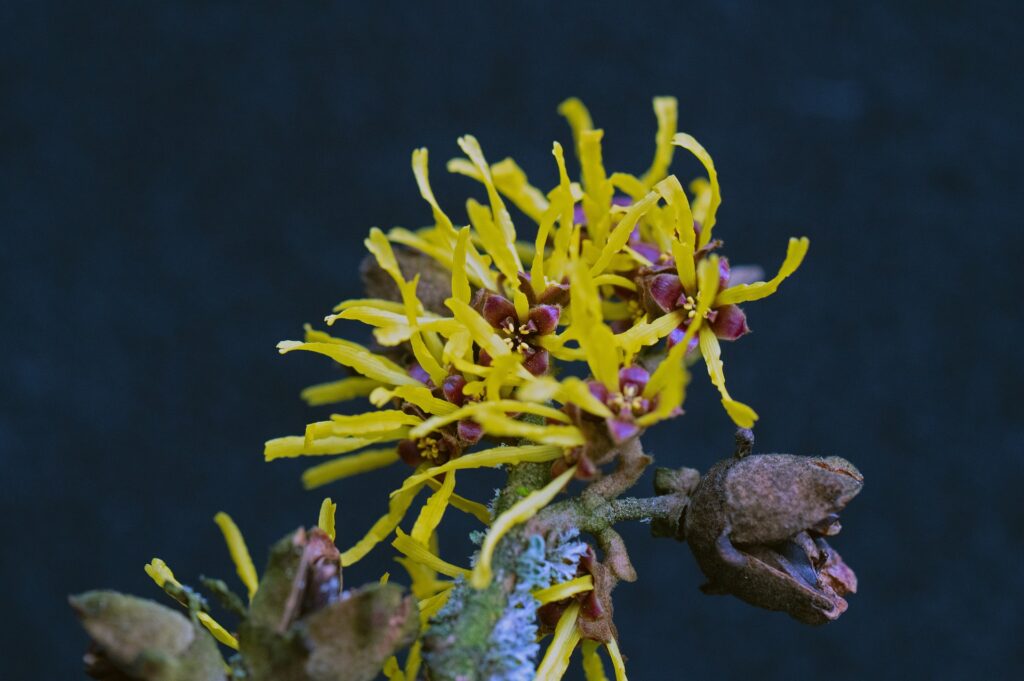
13. Wisteria
Wisteria is a genus of flowering plants that are twining vines, most commonly found growing at the side of homes and buildings. These breathtaking plants produce purple, white, blue, and pink flowers depending on the species.
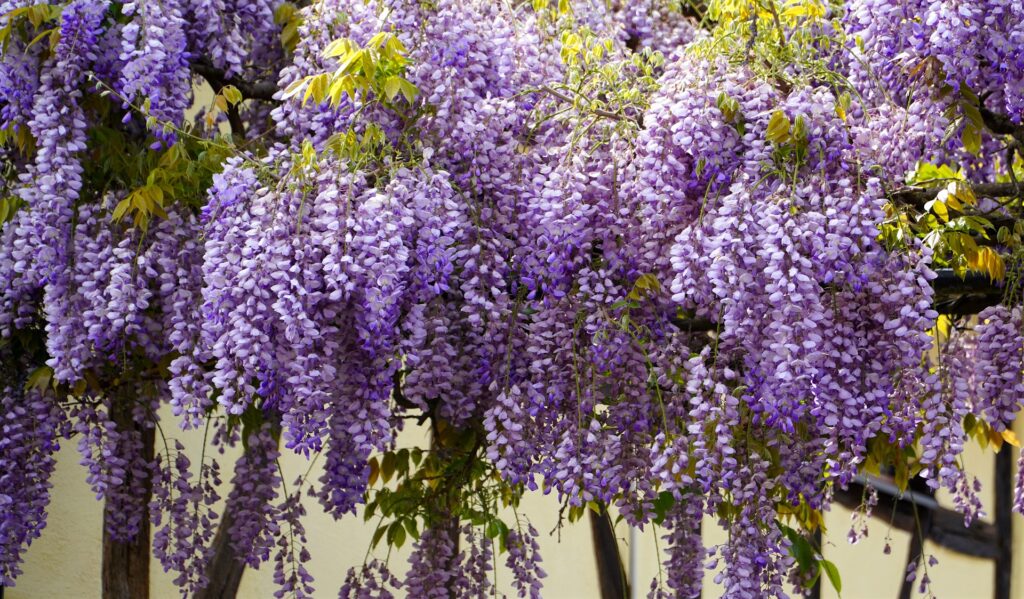
14. White Mugwort (Artemisia Lactiflora)
Belonging to the daisy family, white mugwort is a western China-native flowering plant that grows in the form of a clump. During summer and fall, the clump blooms creamy-white flowers that stand out against the dark green leaves.
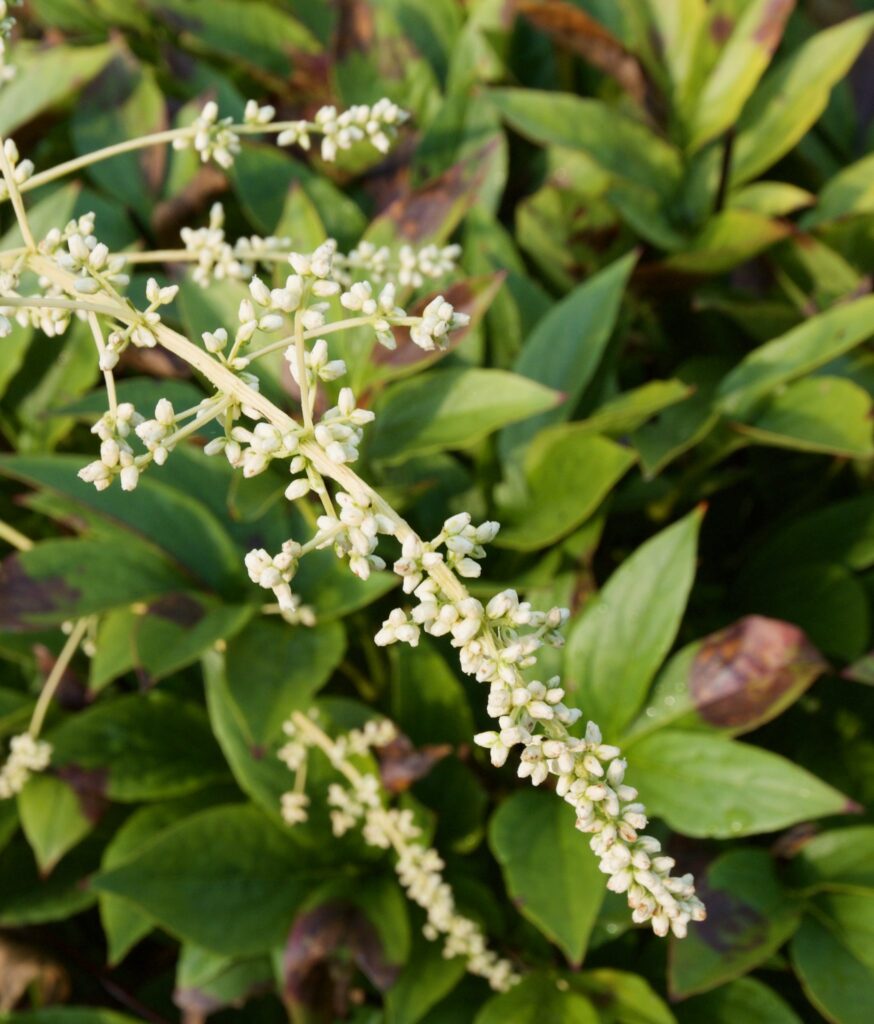
15. Wishbone Flower (Torenia Fournieri)
The wishbone flower, also known as bluewings, is a small landscape annual that typically grows between 12 and 15 inches tall. At the top of the plant is a small flower that comes in blue, white, pink, combinations, and with yellow markings.
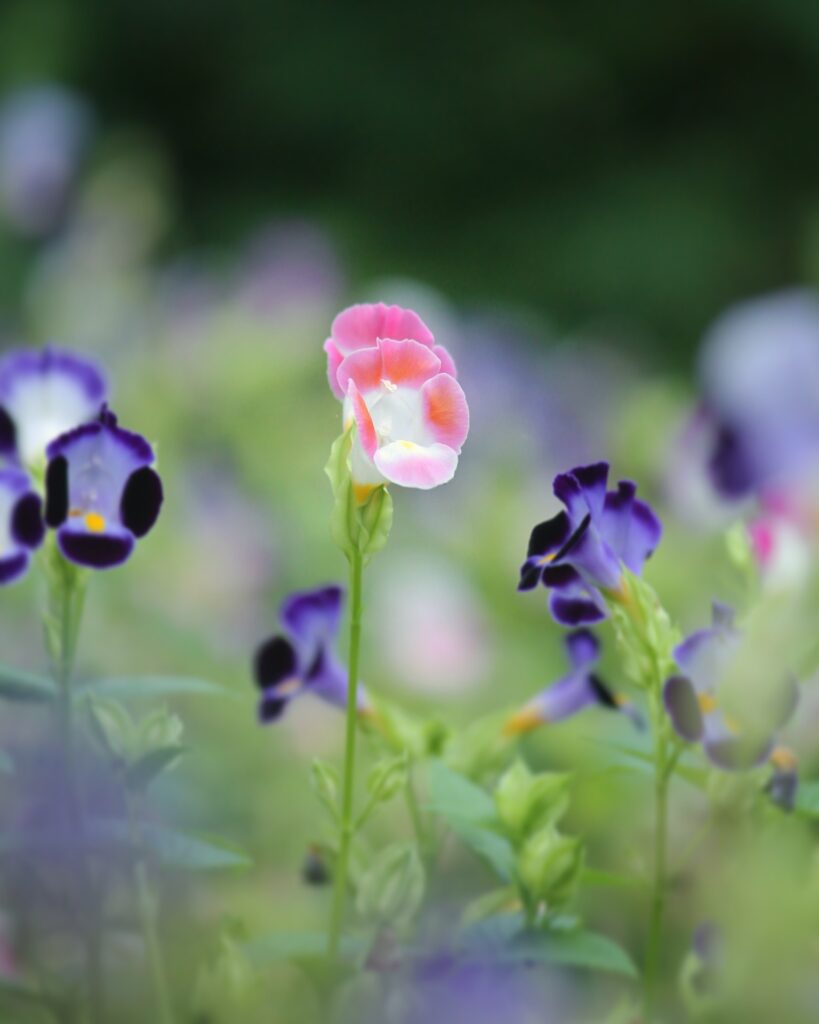
16. Water Avens (Geum Rivale)
Native to most of Europe, the water avens produce dark red flowers from May to September. Other names for this flower include Indian chocolate, water flower, and drooping avens.
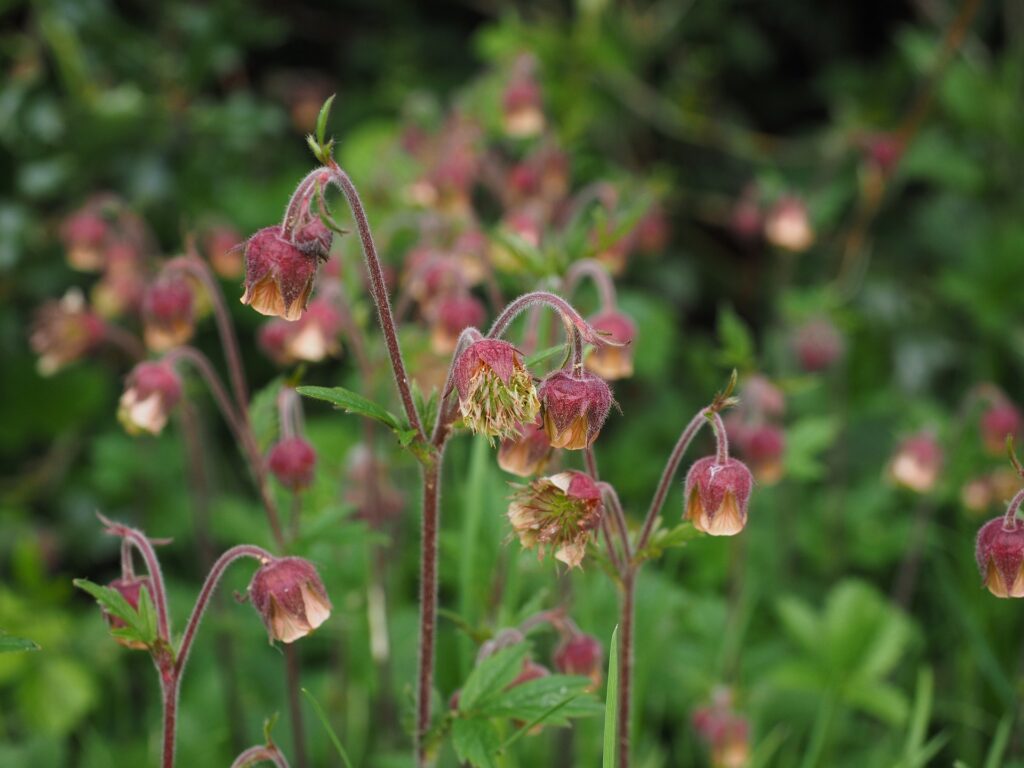
17. Weigela
A genus of deciduous flowering shrubs, weigela are natives to eastern Asia and famously named after the German scientist, Christian Ehrenfried Weigel. The shrubs produce an array of flowers varying in shades of pink and purple, and rarely yellow.
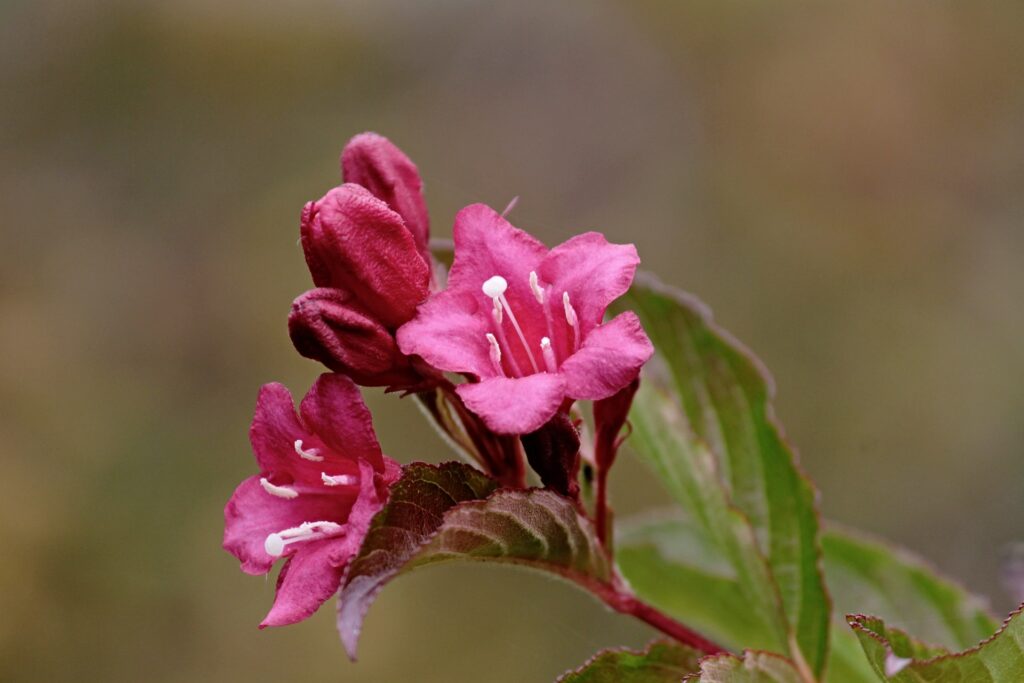
18. Western Wild Ginger (Asarum Caudatum)
Native to most of the western North America, the western wild ginger is an evergreen that produces flowers from spring to fall. These flowers feature three prominent lobes (making the flower look something like an alien) that are brown-purple in color.
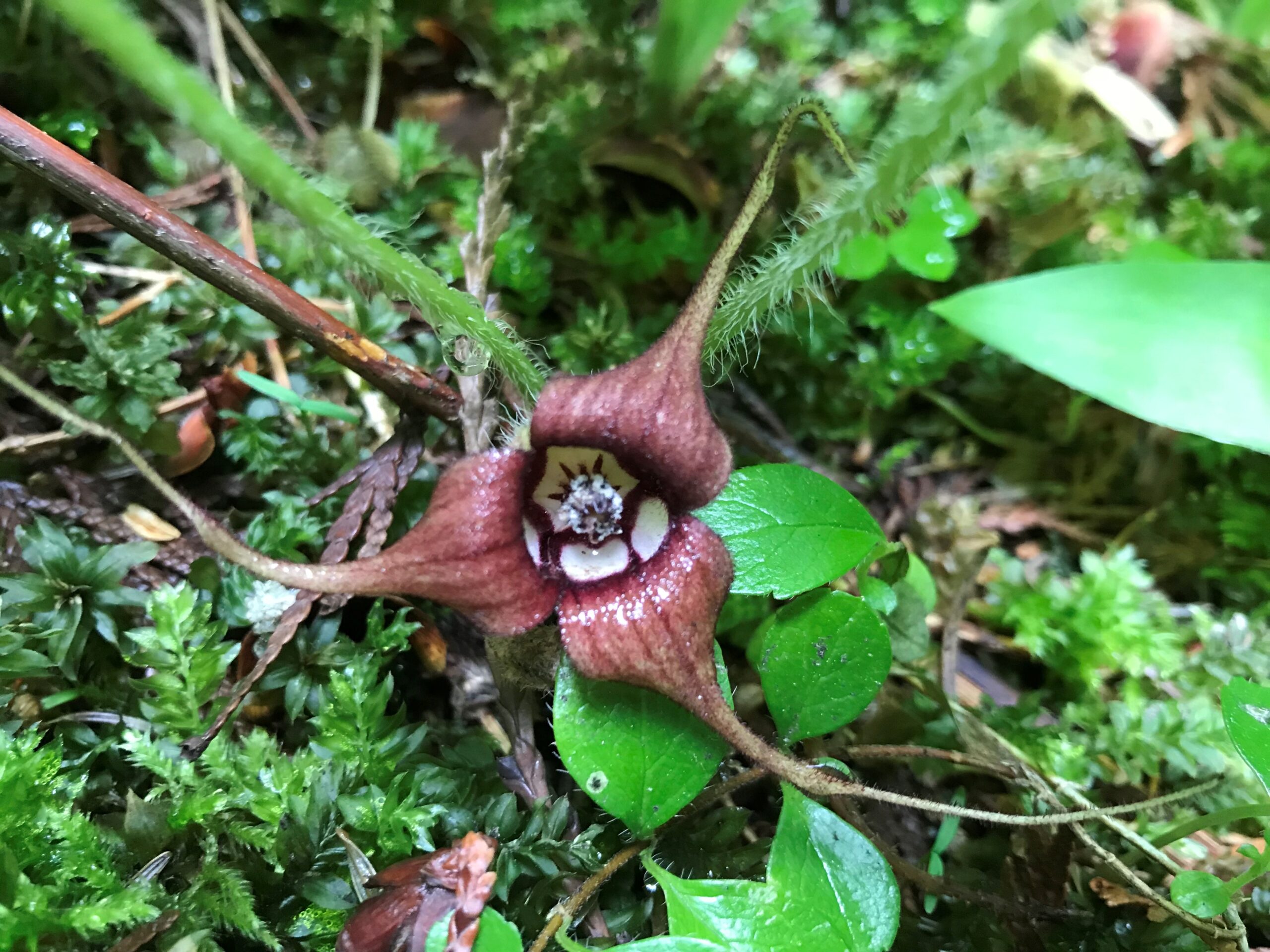
19. Wild Strawberry (Fragaria Vesca)
Though wild strawberry plants are most commonly known for producing vibrant and sweet red strawberries, they also produce delicate white flowers. These plants grow naturally across the Northern Hemisphere and belong in the rose family.
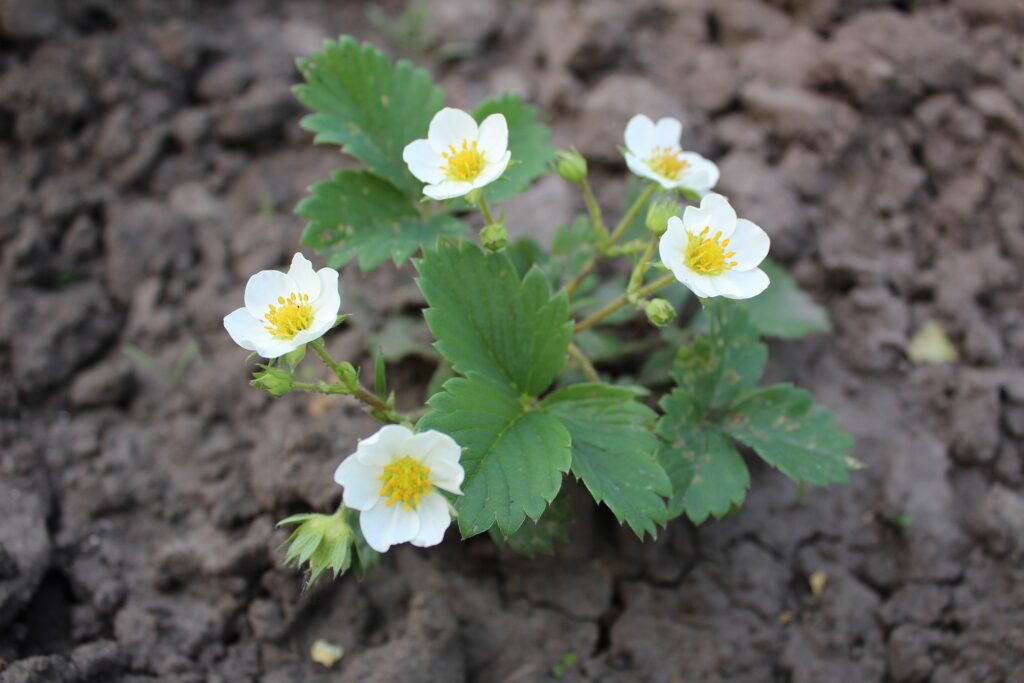
20. Winged Monkey Flower (Mimulus Alatus)
Also known as the sharpwing monkey flower, the winged monkey flower is a North American-native plant that consists of green foliage and violet (or blue) flowers. The name is derived from the shape of the flowers, wherein the lower and upper petals resemble a monkey’s face.
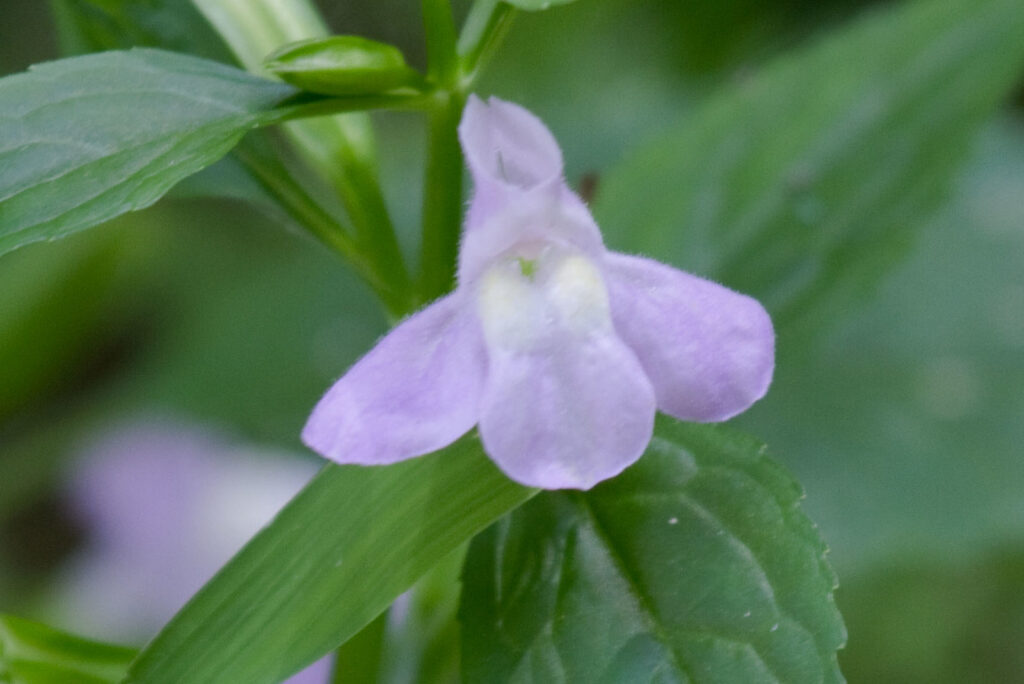
21. Whirling Butterflies (Gaura Lindheimeri)
Also known as Indian feather, Lindheimer’s beeblossom, and white gaura, the whirling butterflies is a perennial plant that is only native to two states – southern Louisiana and Texas. Each flower produced features four white petals and long, hair-like stamens.
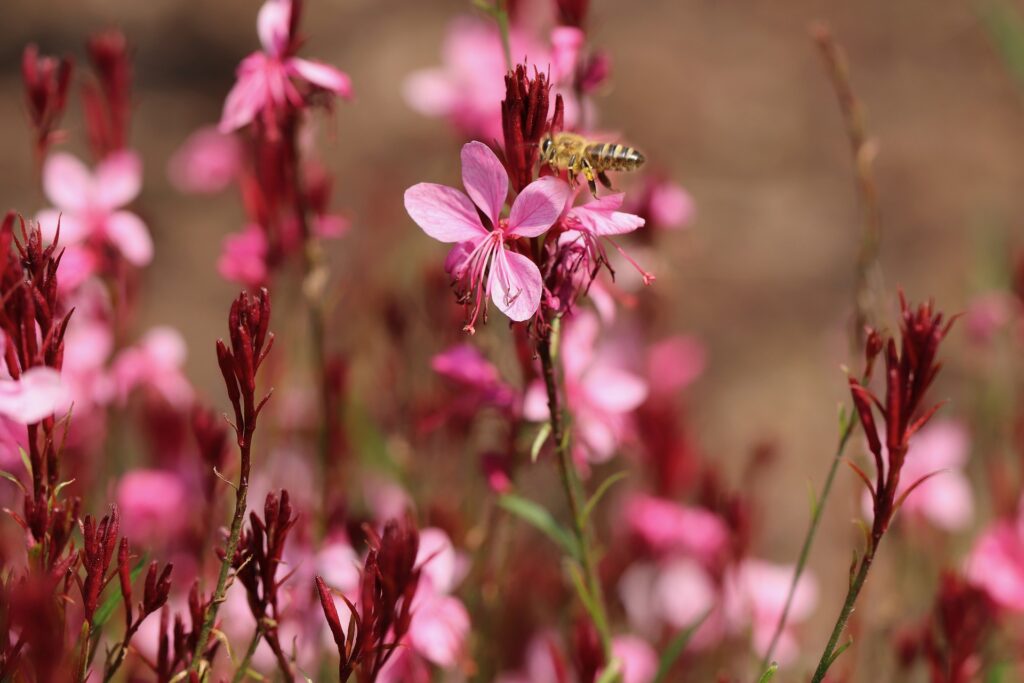
22. Wooly Violet (Viola Sororia)
Also known as the common blue violet, the wooly violet is a herbaceous perennial that is only native to eastern North America. These plants exhibit short stems and violet flowers – though despite the dainty flowers, the plants are often considered a weed when they appear on grass and lawns.
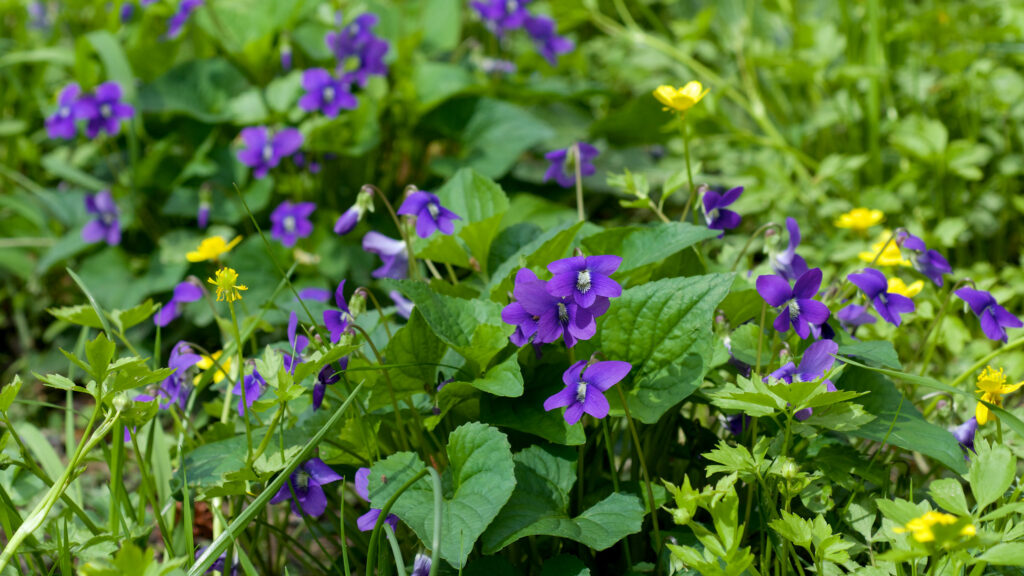
23. White Turtlehead (Chelone Glabra)
Another North American native flowering plant, the white turtlehead is named after the distinctive turtle head-like shape of the white flowers. It is believed to be a part of the plantain family, and the plant is known to be the favorite egg-laying spot for Baltimore checkerspot butterflies.
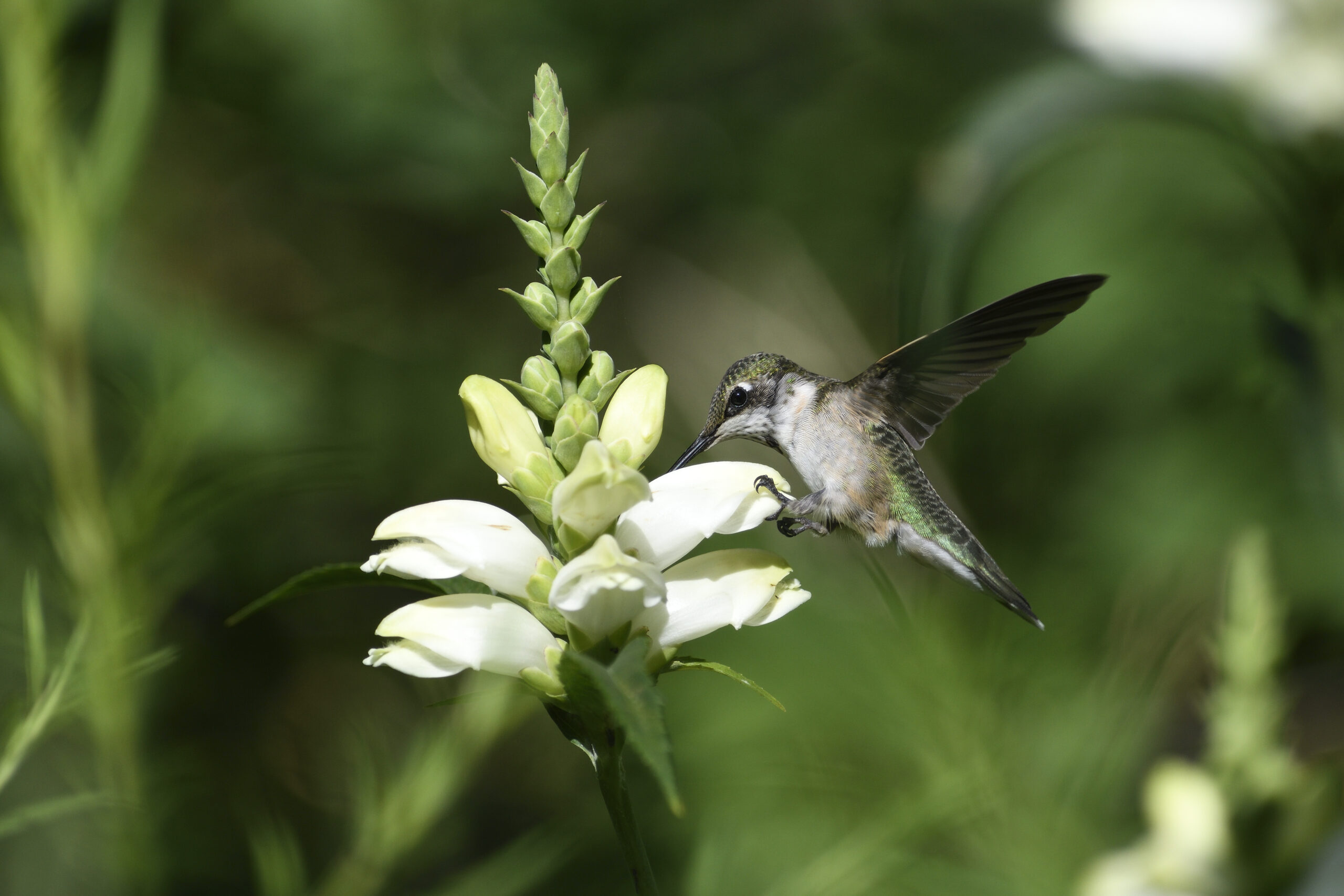
24. White Evening Primrose (Oenothera)
The oenothera genus refers to around 145 species of flowering plants, also known as the evening primrose or the white evening primrose for the white variety. These flowers are native throughout the Americas and, despite the name, are not at all related to actual primroses.

25. Willow Shrub
Unlike the famous willow trees, willow shrubs feature catkins as opposed to showy flowers. Catkins are small clusters of tiny flowers, which bloom from willow shrubs to create a blanket of yellow that covers the shrub.
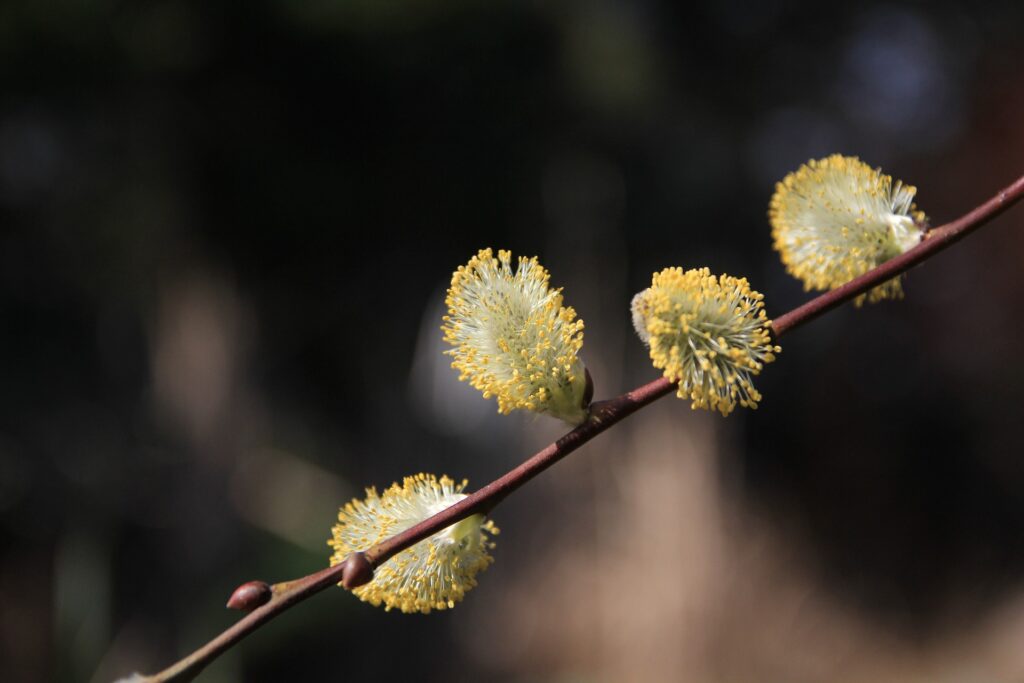
26. White Trumpet Pitcher Plant (Sarracenia Leucophylla)
Also known as the purple trumpet leaf or the crimson pitcher plant, the white trumpet pitcher plant is a notoriously carnivorous plant that feeds off trapping insects and bugs. This plant features trumpet-shaped white flowers with a wavy-edged hood and purple veins.
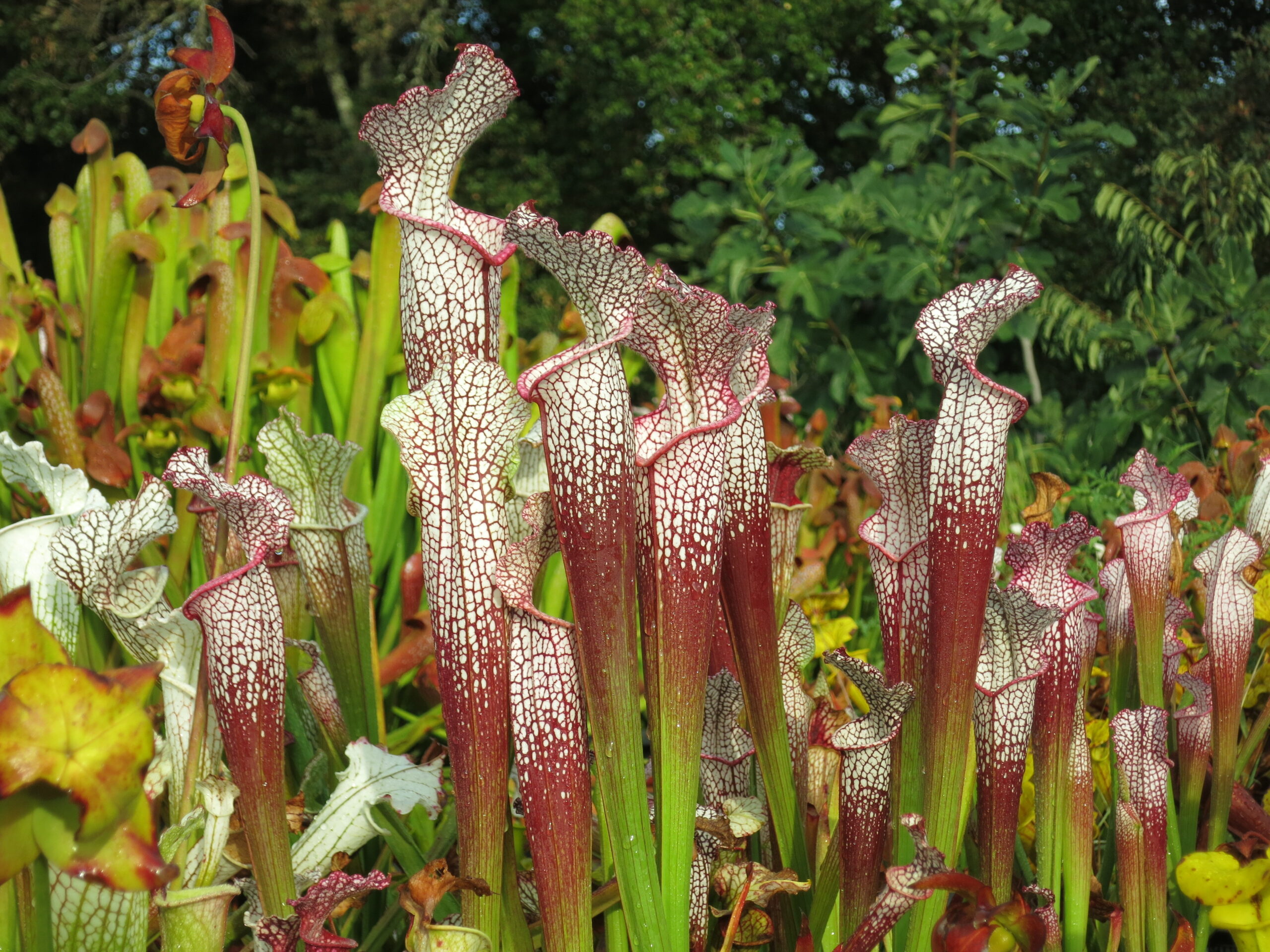
27. Wood Lily (Lilium Philadelphicum)
Also known as the prairie lily or the western red lily, the wood lily is a North American-native that creates a powerful explosion of bright or burnt orange amongst the woodland foliage. As with all lily species, the wood lily is extremely toxic to cats and isn’t suitable for homes with felines.
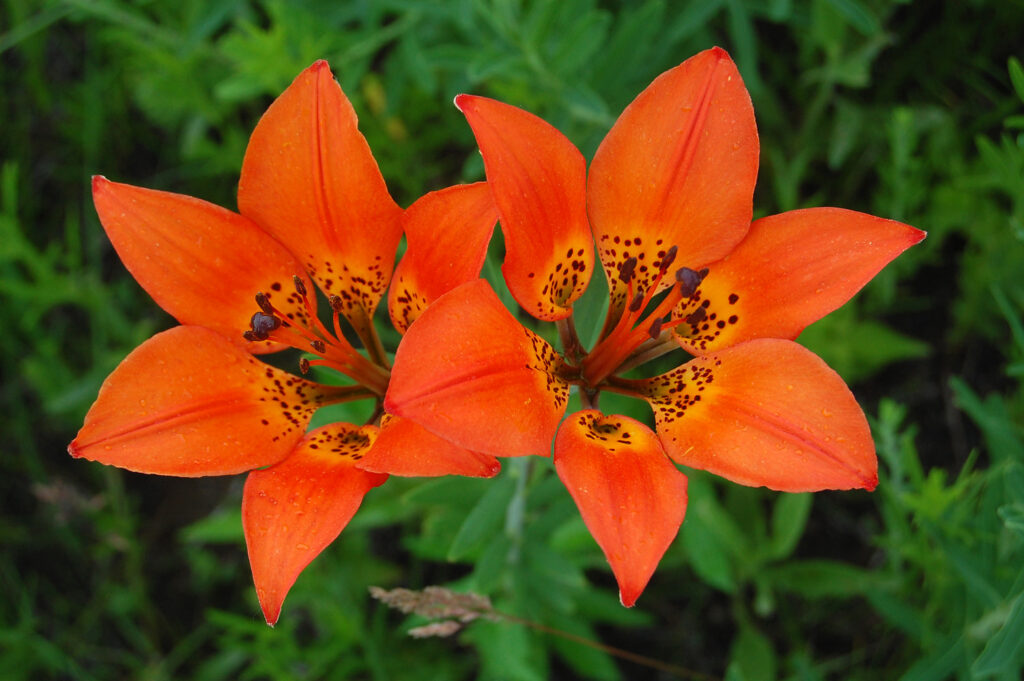
28. White Horehound (Marrubium Vulgare)
Also known as common horehound, the white horehound is a flowering plant related to the mint family. These grayish-green herbaceous perennials are covered in downy hairs and feature clusters of tiny white flowers towards the upper part of the stem.
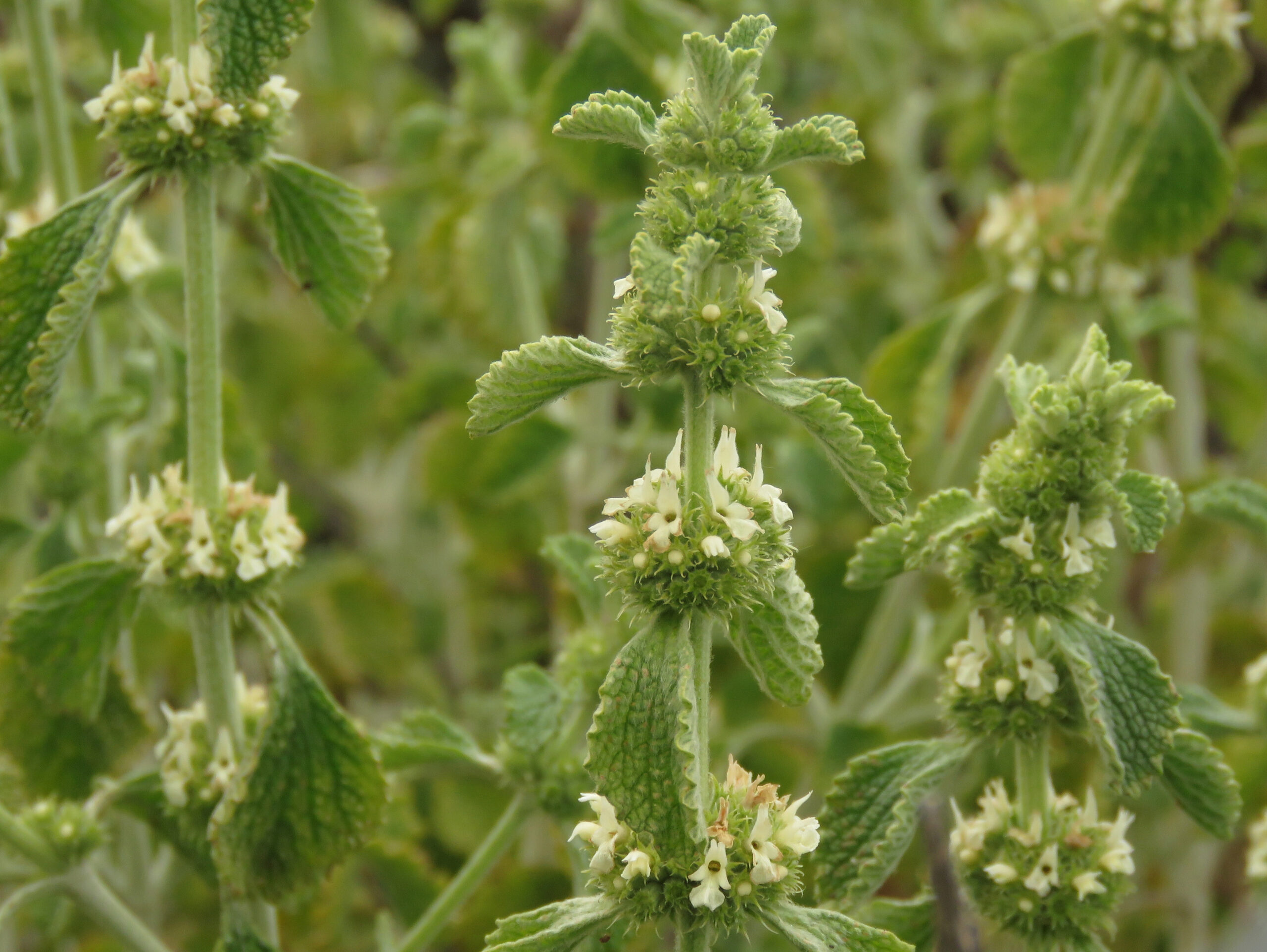
29. Whipple Cholla (Cylindropuntia Whipplei)
A member of the cactus family, the whipple cholla is technically a flowering cactus that produces yellow or light-brown “flowers” at the end of the cacti. These plants also produce fruit that are rubbed off and dried or stewed as a source of food for the Zuni people.
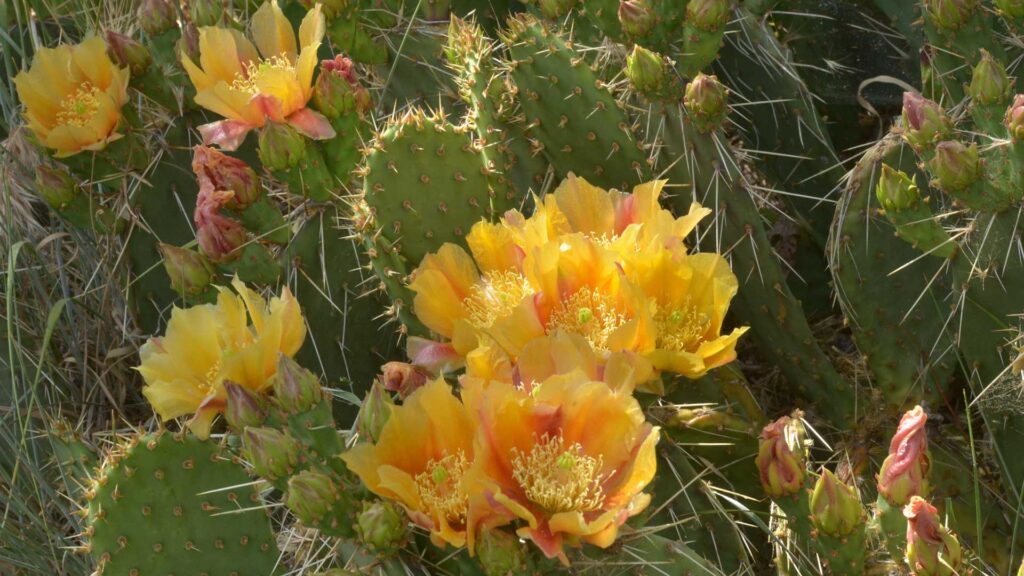
30. White Stonecrop (Sedum Album)
Found in the northern temperate regions, the white stonecrop typically grows in the crevices of rocks or rocky soil. This plant grows throughout the year and blooms small white flowers in summer, making it an ideal plant to grow in a rock garden.
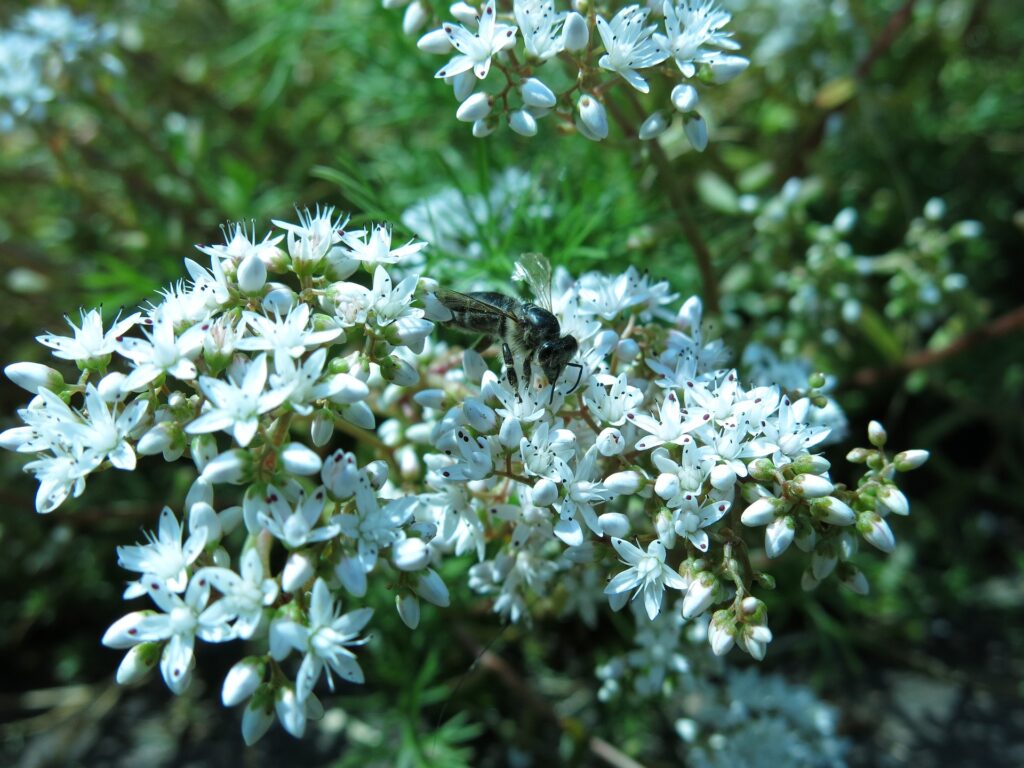
31. Westringia
An Australian shrub, the westringia is a member of the mint family that blooms white flowers consisting of four petals. These white flowers stand out against the pale green foliage, giving the shrub a frosty appearance.
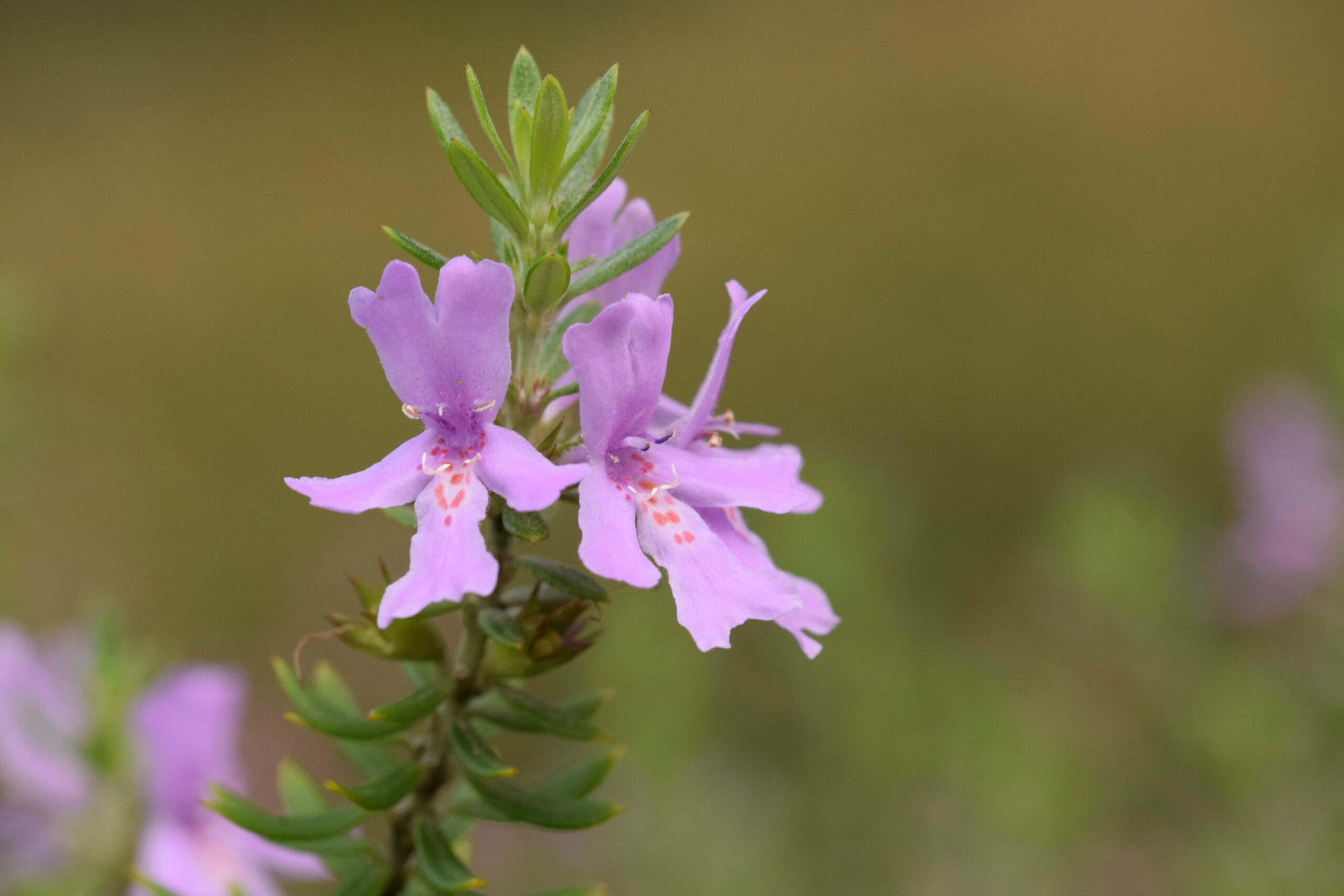
Conclusion
So, there you have it! Hopefully, this has provided you with some newfound knowledge about flowers that start with W.
We hope you learned something from this article, here are other articles that you can learn from:
12 Fantastic Brandy Flowers (Including Pictures)







